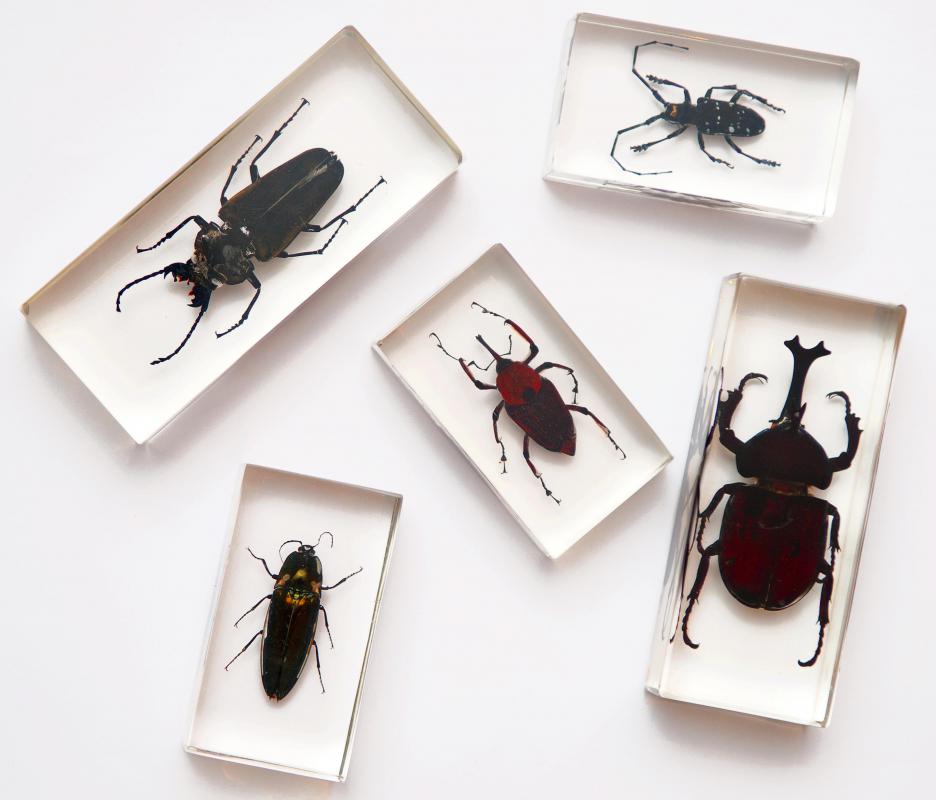At WiseGEEK, we're committed to delivering accurate, trustworthy information. Our expert-authored content is rigorously fact-checked and sourced from credible authorities. Discover how we uphold the highest standards in providing you with reliable knowledge.
How do I get Rid of a Beetle Infestation?
A beetle infestation can be the source of much frustration to any gardener, farmer or homeowner, as these insects can do significant damage to crops and landscaping. In most cases, a beetle infestation can be controlled with one of the following methods: man-made or organic insecticides, traps, mechanical removal or natural predators. In some cases, combining one or more of these techniques may be necessary to control a particular beetle infestation.
Chemicals are a good way to control a beetle infestation. A large number of insecticides are available on the market that will kill one or more types. These chemicals must be used with care, however, as they are generally very toxic and can pose a health risk to people and animals. Availability will vary in different areas of the world. Consult your local garden center or agricultural extension office for information about what chemicals and organic pesticides are available and approved by the relevant government.

Organic pesticides have become a popular alternative to man-made chemicals for pest control. They are derived from natural sources, like trees or plants such as the chrysanthemum, which is the source of pyrethrum. Many of these, such as neem oil and pyrethrum have been proven effective in controlling many insect pests, including many species of beetle. Rotenone and spinosad are other organic pesticides known to be effective against many beetles, especially potato and flea beetles.

Mechanical removal of beetles can be an effective method of control for certain species. Some species may be resistant to certain insecticides and can be picked off of plants by hand. Gloves should be worn while removing beetles in this way, as some species, such as blister beetles, can exude chemicals that can irritate the skin and cause rashes or blisters. Some beetle infestations can be controlled simply by washing the beetles off with a hose, although other methods to prevent re-infestation must be employed. Many companies manufacture traps for japanese beetles, which can eliminate large numbers of these pests.

Other organisms such as nematodes and predatory bacteria are often used to control some beetle species, especially Japanese beetles. Nematodes attack adult beetles, killing them from within. Bacteria are ingested by larval and adult beetles, acting as a stomach poison. Predatory wasps are sometimes used to control some types of beetles, and many species of birds feed on these pests as well, although it may be difficult to attract the desired species of predator.
AS FEATURED ON:
AS FEATURED ON:













Discuss this Article
Post your comments